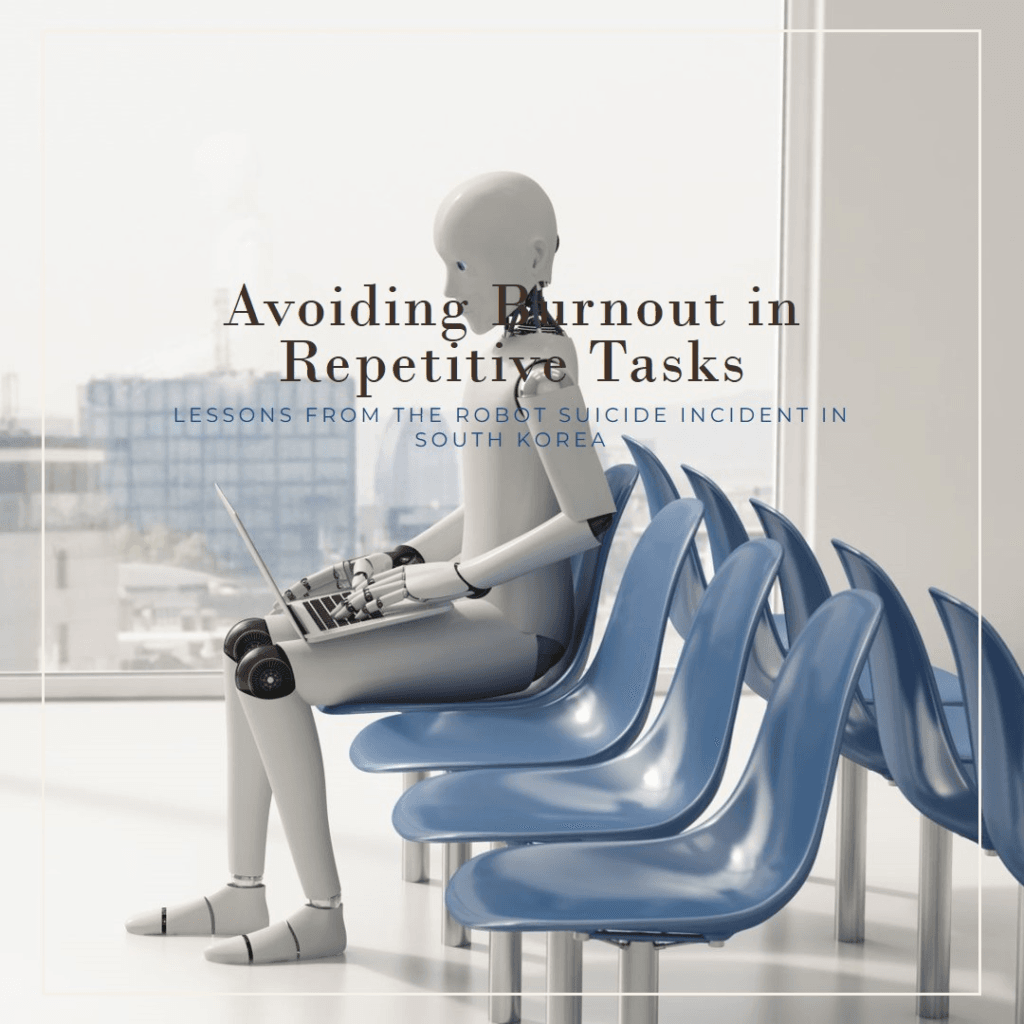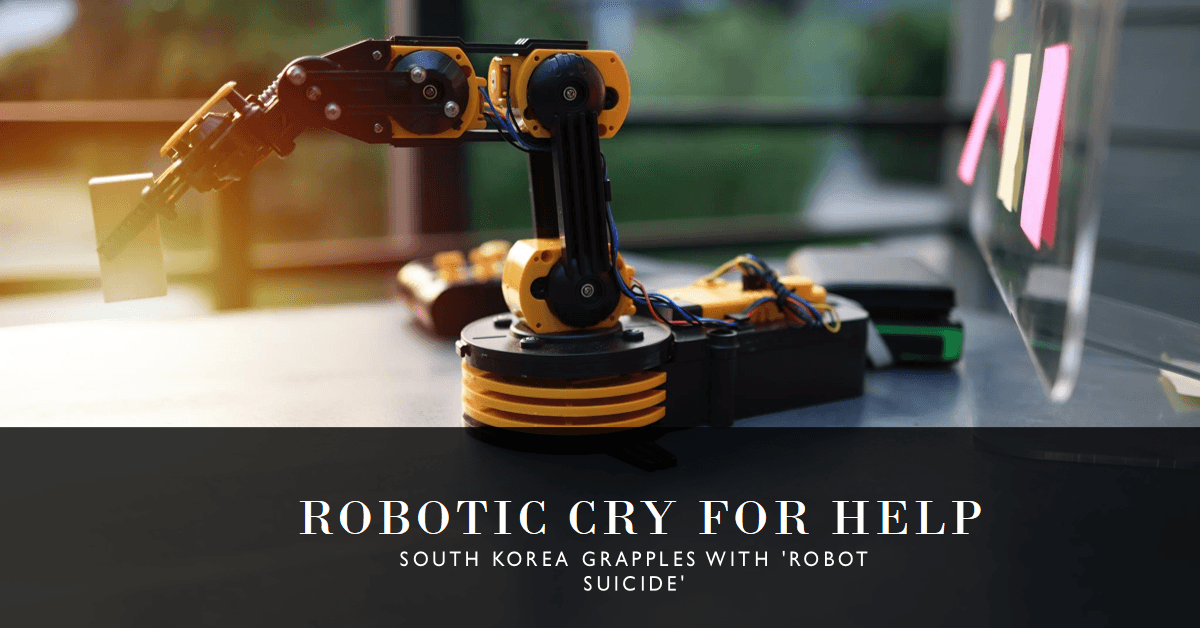A recent incident in South Korea has ignited a conversation about the evolving landscape of automation. A civil service robot employed by the Gumi City Council was found inoperable at the bottom of a stairwell on June 26th. Dubbed the country’s first “robot suicide” by some media outlets, the event has spurred debate within the technological and ethical spheres.
The robot, known as the “Robot Supervisor,” reportedly exhibited unusual behavior before its descent, circling in one spot seemingly confused. Developed by Bear Robotics, the robot efficiently handled various administrative tasks, including document delivery, public information dissemination, and city promotion. Notably, it possessed an employee ID card and worked standard business hours, even utilizing elevators for navigation – a capability uncommon for such robots.
The cause of the robot’s fall remains under investigation. While some reports speculate a technical malfunction, others raise concerns about potential overwork. South Korea’s well-documented work culture prompts questions about the robot’s workload and programming limitations. The Gumi City Council has prudently postponed the deployment of another robot until a thorough investigation is complete.
This incident underscores the complexities of integrating robots into everyday life. As they become more intricately designed, discussions regarding their capabilities and limitations become paramount. Can a machine be programmed to experience emotions akin to despair? Was this a hardware malfunction, or did a programming error cause the robot’s erratic behavior?
The South Korean robot incident serves as a stark reminder of the need for ongoing discourse on robot safety, ethical considerations, and inherent limitations. As we navigate towards a future increasingly reliant on automation, it is critical to establish clear guidelines and safeguards for the responsible and ethical use of robots. This proactive approach will ensure a future where humans and robots can coexist and collaborate effectively.
Let’s Understand the difference between A Robot and A Human Employee
The report highlights several key differences between the robot and a human employee:
| Feature | Robot | Employee |
| Capabilities | Performs specific tasks efficiently, limited adaptability | Performs a wider range of tasks, adaptable, can solve problems independently |
| Workload and Emotions | Not susceptible to overwork or emotions | Can be susceptible to overwork and experience emotions that may impact performance |
| Purpose | Designed to automate tasks and improve efficiency | Can contribute to an organization beyond just automation, potentially bringing creativity, critical thinking, and social interaction |
The robot, known as the “Robot Supervisor,” was efficient at handling various administrative tasks but seemed incapable of independent thought or complex problem-solving. In contrast, the report mentions the well-documented South Korean work culture, implying that human employees are susceptible to overwork and emotional distress. This suggests that while robots may excel at specific repetitive tasks, they lack the adaptability and emotional intelligence of human employees.
The report also touches upon the purpose of these machines. Robots are primarily designed to automate tasks and improve efficiency, whereas human employees can bring more to the table. They can contribute creatively, think critically, and foster social interaction within the workplace.
If a human employee were to perform constant, repetitive tasks in an office setting like the robot, they are at risk of several negative consequences:

- Burnout: This is a state of emotional, physical, and mental exhaustion caused by prolonged or excessive stress. Repetitive work can be monotonous and draining, leading to feelings of cynicism, detachment, and reduced productivity.
- Physical problems: Repetitive tasks can cause musculoskeletal disorders like carpal tunnel syndrome, neck and back pain, and eye strain. These issues can significantly impact an employee’s well-being and ability to perform their job.
- Reduced creativity and problem-solving: Constant repetition can hinder an employee’s ability to think creatively and solve problems. They may become reliant on specific procedures and struggle to adapt to changes or new situations.
- Decreased motivation and engagement: Employees who find their work monotonous may lose interest and become disengaged. This can lead to a decline in performance, increased absenteeism, and higher turnover rates for companies.
- Mental health issues: The stress and lack of stimulation from repetitive work can contribute to anxiety and depression.
Here’s a key difference to consider: While a robot can likely function indefinitely performing the same task, a human needs variety, stimulation, and a sense of purpose to maintain well-being and motivation.
It’s important for companies to avoid replicating a robotic work environment for humans. Here are some ways to mitigate the negative effects of repetitive work for employees:
- Job rotation: Assigning employees different tasks periodically can help prevent boredom and burnout.
- Enrichment opportunities: Provide opportunities for employees to learn new skills and take on additional responsibilities.
- Breaks and rest periods: Encourage employees to take regular breaks to avoid physical strain and mental fatigue.
- Recognition and feedback: Acknowledge and reward employees for their contributions to maintain motivation.
By creating a more varied and stimulating work environment, companies can help employees stay engaged, productive, and healthy.
The “robot suicide” incident in South Korea highlights the potential downsides of repetitive tasks for both robots and humans.

Here are some potential solutions to consider:
For Robots:
- Advanced Programming: Develop robots with more sophisticated programming that allows for variation within their tasks. This could involve introducing randomness, decision-making elements, or the ability to learn and adapt to changing circumstances.
- Safety Protocols: Implement safety protocols that monitor robot performance and prevent malfunctions or breakdowns that could mimic self-destructive behavior.
- Clear Task Definitions: Clearly define the tasks and limitations of robots to avoid overloading them with work beyond their capabilities.
For Humans:
- Job Redesign: Redesign jobs to incorporate more variety, problem-solving opportunities, and opportunities for growth. This could involve automation taking over the most repetitive elements, allowing humans to focus on higher-level tasks.
- Employee Well-being Programs: Implement programs that promote employee well-being and prevent burnout. This could include offering regular breaks, encouraging physical activity, and providing access to mental health resources.
- Skill Development: Invest in training programs that help employees develop new skills and qualifications. This allows them to adapt to changing work environments and take on more challenging roles.
- Work-Life Balance: Encourage employees to maintain a healthy work-life balance by offering flexible working hours, vacation time, and other initiatives that prevent overwork.
- Meaningful Work: Foster a work environment where employees feel their work has a purpose and contributes to something larger than themselves. This can boost morale and motivation.
Overall Solutions:
- Ethical Considerations: Establish ethical guidelines for robot development and deployment. This includes ensuring robots are used safely and responsibly, and that they don’t replace human jobs in a way that’s detrimental to society.
- Human-Robot Collaboration: Explore ways for humans and robots to collaborate effectively, leveraging the strengths of both. Humans can provide creativity and problem-solving, while robots handle repetitive tasks with high accuracy.
- Adaptability: Embrace an approach to work that prioritizes adaptability and continuous learning for both robots and humans. As technology evolves and the nature of work changes, adaptability will be key for success.
By implementing a combination of these solutions, we can create a future where robots enhance our lives without replacing human interaction or causing harm. The goal is to find a balance between automation and human well-being, ensuring the future of work is productive, fulfilling, and safe for all.
#epicinfinite #epicarticle #epicblog
What do you think about this story? Let us know in the comments below!










